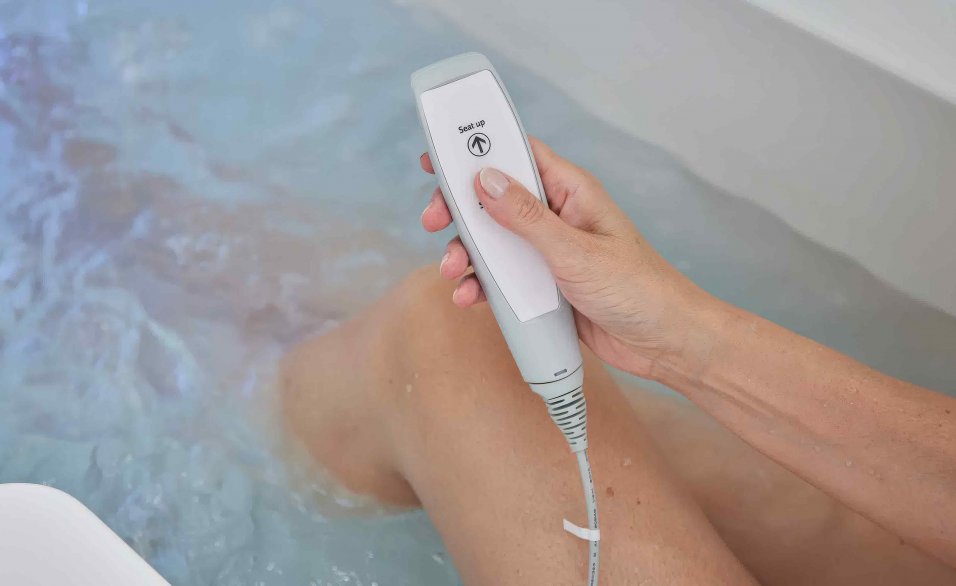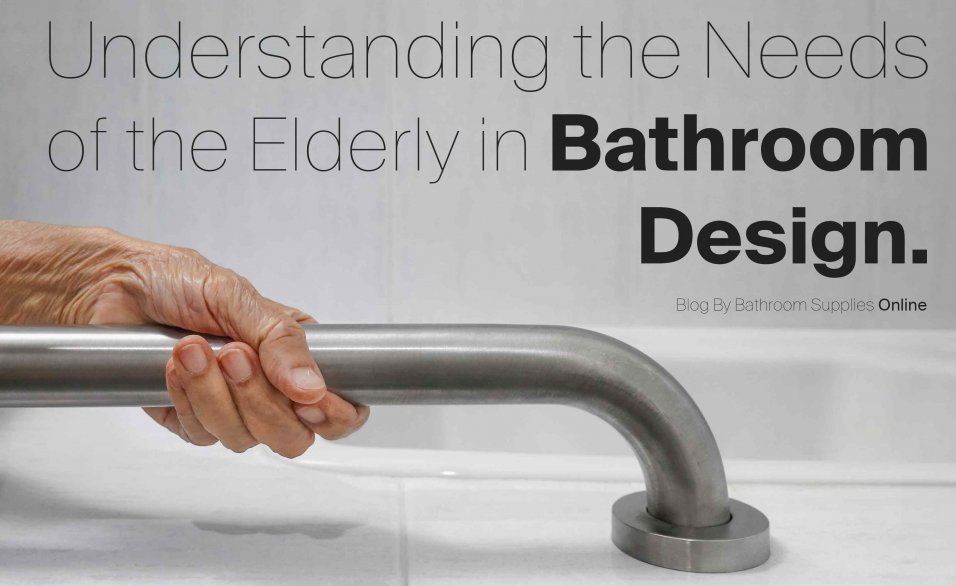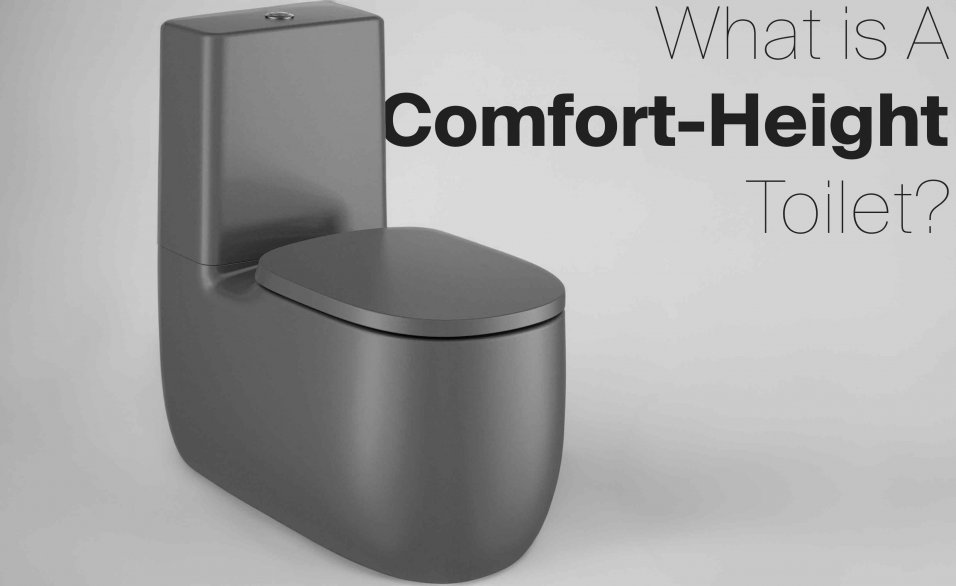| Tags | walk-in bath bath easy riser montana priya tray sizes anti-slip shower tray sizes shower tray freestanding baths geberit aquaclean aquaclean carron corner bath carron baths show all posts |
Understanding the Needs of the Elderly in Bathroom Design
Designing a bathroom tailored for the elderly isn't merely about aesthetics or functionality; it's about creating a safe and accessible space that caters to their unique needs. As we age, our mobility and agility diminish, making everyday tasks potentially hazardous. A bathroom, often a confined and slippery environment, poses particular risks. Hence, it’s crucial that bathroom design prioritises safety and convenience to accommodate the diminishing physical capacities of the elderly.
In this blog, we’ll explore essential features such as comfort-height toilets, walk-in baths, and anti-slip shower trays. Our aim is to offer practical advice on how to design a bathroom that not only ensures safety but also enhances the quality of life for elderly individuals by making their daily routines less daunting and more manageable.
Understanding the Needs of the Elderly in Bathroom Design
The Reality of Ageing and Mobility
As we age, our bodies naturally undergo changes that can significantly impact mobility. Joints become stiffer, muscles weaken, and balance can be less steady. For many elderly people, these changes translate into a daily struggle with movements that younger individuals often take for granted—like bending, stretching, and lifting. The bathroom, with its wet surfaces and tight spaces, can become one of the most challenging environments in the home.
Recognising the mobility and safety challenges that the elderly face is the first step in designing a bathroom that is both functional and safe. Common issues such as difficulty stepping over high tub walls, the risk of slipping on wet floors, and the strain of lowering oneself onto a standard-height toilet can all be mitigated with thoughtful design choices.
The Importance of Bathroom Safety
Why is bathroom safety so paramount? For starters, the statistics are quite telling. A significant percentage of home accidents involving older adults occur in the bathroom. Falls are the leading cause of injury among the elderly, and the consequences can be severe, from broken bones to increased dependence on others. The fear of falling can also lead to anxiety and a reduced quality of life, as individuals may avoid necessary daily activities that involve the risk of slipping or falling.
Designing with safety in mind is not just about preventing accidents. It’s about creating an environment where the elderly can maintain their independence and dignity. It’s about making the space where they start and end their day as risk-free as possible.
Features of an Elderly-Friendly Bathroom
What makes a bathroom accessible to the elderly? Several features are key when it comes to enhancing safety and accessibility. First, let’s talk about comfort-height toilets. These fixtures are designed to be slightly taller than standard toilets, typically 17 to 19 inches from floor to seat, as opposed to the standard 15 inches. This increased height makes it easier for the elderly to sit down and stand up without straining their knees and hips.
Walk-in baths are another crucial feature. These baths have doors that allow users to enter without having to climb over a high edge, significantly reducing the risk of falls. Many models also include built-in seats and handrails, further enhancing safety.
Anti-slip shower trays are designed to provide a safer showering experience. They are built from materials that help prevent slipping, and they work in conjunction with other safety features like grab bars and seats. These trays ensure that even if water and soap make the surface slippery, the risk of falling is minimised.
What Are Comfort-Height Toilets?
Comfort-height toilets are designed to be taller than standard toilets. While a standard toilet typically measures about 15 inches from floor to seat, a comfort-height toilet extends that range to between 17 and 19 inches. This extra height makes it easier for individuals, particularly those with mobility issues, to use the toilet independently.
Benefits of Comfort-Height Toilets for the Elderly
The primary benefit of comfort height toilets is their ease of use for older adults, especially those who struggle with bending and sitting due to arthritis, joint pain, or other mobility impairments. The higher seat allows for a more natural transition from standing to sitting and back again, reducing the strain on the hips, knees, and back. This can make a significant difference in the daily life of an elderly person, offering them more comfort and less pain during one of their most routine activities.
Another benefit is its psychological and emotional independence. Being able to use the bathroom without assistance from others not only enhances safety but also boosts the individual’s confidence and dignity. This independence is crucial for mental health and well-being, as it contributes to a sense of self-sufficiency.
Choosing the Right Comfort-Height Toilet
When selecting a comfort-height toilet, there are several considerations to keep in mind to ensure that it meets the specific needs of the elderly user. Here are some tips and considerations:
Flush Type: Modern toilets come with various flushing systems. Choose one that requires minimal effort, such as touchless flush systems or those with easy-to-handle flush buttons. Some models offer dual flush options, which are not only easier for the elderly to operate but also environmentally friendly.
Handles and Support: While the toilet's height is important, adding handles or support rails can provide extra security. These supports should be sturdy and positioned in a way that they can be easily reached from a seated position. In some cases, toilet frames that surround the toilet can be installed, offering robust support for both sitting and standing motions.
Seat Design: The design of the seat itself matters. A slightly contoured seat can offer better comfort and stability than a flat one. Also, consider the material of the seat; softer surfaces might provide more comfort but can be more challenging to keep clean.
Space Considerations: Ensure that the bathroom layout accommodates the comfort-height toilet without compromising on space for movement. Adequate space around the toilet is necessary for those who use mobility aids, such as walkers or wheelchairs.
Quality and Durability: Given that the toilet is a long-term investment, choose a model known for its durability and backed by a solid warranty. It’s worth spending a bit more on a toilet that will reliably meet the user's needs over time without frequent maintenance issues.
Walk-in Baths
Walk-in baths are an innovative solution designed to tackle the challenges that conventional bathtubs present to the elderly. These specialised baths provide a safer and more accessible bathing option, thanks to their unique design and features.
Understanding Walk-in Baths
A walk-in bath typically features a door on the side that allows the user to enter without having to climb over the rim. Once inside, the door seals shut, making it watertight. This design significantly reduces the risk of slipping and falling while getting into or out of the bath. Additionally, most walk-in baths are equipped with built-in seats, allowing the user to sit comfortably while bathing rather than having to lower themselves all the way to the floor of the tub.
Walk-in Baths for the Elderly: Advantages
The primary advantage of walk-in baths is safety. The low threshold for entry, combined with the door mechanism, greatly reduces the risk of falls—a common and dangerous occurrence among elderly individuals. In addition, these baths often feature anti-slip flooring, further enhancing safety.
Accessibility is another significant benefit. The ease of entry and exit is a crucial factor for those with limited mobility or balance issues. Walk-in baths allow elderly users to maintain their bathing routines without assistance, promoting independence and preserving their privacy.
Independence in bathing also contributes to an elderly individual’s sense of dignity and self-esteem. Being able to take care of one's own hygiene needs without help can have a profound impact on a person's mental and emotional well-being.
Choosing the Right Walk-in Bath
When selecting a walk-in bath, consider the following features to ensure you choose the best option for your needs:
Door Types: Walk-in baths come with inward-opening or outward-opening doors. Inward-opening doors are generally watertight and require less bathroom space to operate, while outward-opening doors offer easier access in emergency situations and are suitable for users with larger body types.
Seat Options: For comfort and accessibility, the built-in seat's height and style are important. The seat should be at a comfortable height, typically between 17 and 19 inches, to facilitate easy sitting and standing. Some baths also offer padded seats for additional comfort.
Water Depth: Unlike traditional baths, walk-in baths can have different water depth capacities, allowing for a deeper soak while seated. Ensure the model you choose provides satisfying depth without compromising safety.
Additional Safety Features
To enhance the safety and usability of walk-in baths, consider these additional features:
Handrails: Strategically placed handrails can aid in safely entering, exiting, and stabilising oneself while in the bath. These should be sturdy and positioned within easy reach.
Textured Floors: To avoid slipping, a textured floor surface is essential. Ensure that the texture is effective even when wet, as well as gentle on bare feet.
Thermostatic Controls: These controls help maintain a consistent water temperature, preventing the risk of scalding. This is particularly important for users who may have reduced sensitivity to heat due to age or medical conditions.
Quick Drain Technology: Some walk-in baths include fast-draining technology, which reduces the time spent waiting for the bath to drain before opening the door to exit.
By carefully selecting a walk-in bath with these features, you can greatly enhance the bathing experience for elderly individuals, providing them with a safe, comfortable, and dignified way to maintain their personal hygiene. This thoughtful investment not only improves safety but also enriches their quality of life.
Anti-Slip Shower Trays
In the quest to create safer bathroom environments for the elderly, anti-slip shower trays are indispensable. These specialised trays are designed to significantly reduce the risk of slipping, making showering a safer activity for individuals with reduced mobility.
Understanding Anti-Slip Shower Trays
Anti-slip shower trays are integral components of any elderly-friendly bathroom. They are essentially the base of the shower, which contains a textured surface to prevent slips and falls. Given that bathrooms are prone to becoming wet and slippery, these trays are crucial in preventing accidents that are common in such environments.
The importance of these trays cannot be overstated, particularly for the elderly, who are at a higher risk of falling. A fall in the shower can lead to severe injuries, and anti-slip shower trays provide a simple yet effective means of mitigating this risk.
Materials and Textures for Anti-Slip Properties
Anti-slip shower trays can be made from a variety of materials, each offering different benefits:
Acrylic: This is a popular choice for anti-slip shower trays due to its lightweight and durable nature. Acrylic trays often feature a textured surface that provides grip underfoot. They are also resistant to mould and mildew, which is crucial in a wet environment.
Stone Resin: Trays made of stone resin are heavier and have a more luxurious look. The surface is usually coated with an anti-slip finish, which can be more subtle in texture compared to other materials but is equally effective.
Ceramic: Known for their hardwearing properties, ceramic trays are another option. They can have a glazed surface with an etched or moulded pattern to enhance grip.
Each material offers a different aesthetic and performance level, so choosing the right one depends on personal preference and specific needs.
Maintenance Tips for Anti-Slip Shower Trays
Maintaining the effectiveness of anti-slip features is crucial for safety. Here are some tips to keep your anti-slip shower tray in top condition:
Regular Cleaning: The buildup of soap scum and grime can reduce the effectiveness of anti-slip textures. Regular cleaning with a non-abrasive cleaner is essential. Avoid harsh chemicals that can wear down the anti-slip coating.
Immediate Rinse After Use: After each use, it's a good idea to rinse the tray with clean water. This practice helps remove any residual soap or shampoo that might make the surface slippery.
Periodic Deep Cleaning: Depending on the water hardness in your area, mineral deposits can build up on the surface of the shower tray, potentially smoothing out the texture. Use a mild bathroom cleaner designed for limescale to gently remove these deposits without damaging the tray.
Check for Wear and Tear: On a regular basis, inspect the tray for any signs of wear or damage to the anti-slip surface. If the texture appears smooth or the coating is peeling, consider reapplying an anti-slip treatment or replacing the tray.
Non-slip Mats: For added safety, consider placing a non-slip mat within the shower tray. Ensure that the mat itself is regularly cleaned and securely positioned to avoid it becoming a tripping hazard.
By following these maintenance tips, you can ensure that your anti-slip shower tray remains an effective safeguard against falls, thereby creating a safer shower environment for the elderly. Properly maintained, these trays not only enhance safety but also prolong the tray's lifespan and maintain its appearance, contributing to a more pleasant and secure bathroom experience.

Additional Safety and Convenience Features
Creating a safe and convenient bathroom for the elderly extends beyond installing specific fixtures. It includes a number of integrated features that promote ease of use and prevent accidents. Grab bars, proper lighting, and slip-resistant flooring are critical to enhancing safety, while thoughtful design ensures that the space remains functional for those with mobility aids.
Important Safety Features
Grab Bars: These are not just helpful; they are a necessity in any elderly-friendly bathroom. Positioned correctly, grab bars provide support and leverage in all the critical areas of the bathroom, including beside the toilet, in the shower, and next to the bath. They should be sturdy enough to support the user’s weight and placed at an appropriate height to aid in sitting and standing.
Adequate Lighting: Good lighting is crucial to prevent falls and ensure that elderly users can move confidently and safely around the bathroom. The illumination should be even without casting shadows or creating glare, and switches should be easily accessible. Consider using motion sensors or rocker switches that are easier to operate.
Non-Slip Floor Tiles: Slips in the bathroom are a common hazard, but they can be mitigated with the right flooring. Non-slip tiles made from textured ceramic or porcelain provide grip even when wet and are a must-have in any bathroom used by the elderly.
Emergency Systems
Emergency Pull Cords or Buttons: Accidents can happen, and when they do, it's vital that help can be summoned immediately. Emergency pull cords or wall-mounted push buttons should be installed within easy reach of the toilet, bath, and shower. These systems should be simple to operate, often just requiring a pull or push to alert someone in the household or an emergency service.
Layout and Spacing
The layout of an elderly-friendly bathroom must take into account the use of mobility aids such as walkers or wheelchairs. Ample space should be allowed for a turning radius, and there should be enough clearance around bathroom fixtures. This ensures that users can navigate the space without hindrance, promoting a safer and more comfortable environment.
Design and Aesthetics
While functionality is paramount in bathroom design for the elderly, aesthetics need not be sacrificed. A well-designed bathroom can be both safe and stylish, providing a comforting and pleasing space.
Blending Functionality with Style
The challenge is to integrate safety features seamlessly into the overall design. This can be achieved by choosing stylish fixtures that incorporate safety features, like sleek, modern grab bars that complement the bathroom’s design or elegant walk-in baths with glass doors.
Design Themes and Colour Schemes
When choosing a design theme, consider options that create a calm, uncluttered space. Minimalist or Scandinavian styles are not only in vogue but also practical, with their emphasis on simplicity and functionality. For colour schemes, opt for soft, neutral colours that reflect light well, enhancing the sense of space and aiding visibility. Avoid overly glossy surfaces that can be slippery and create glare.
Practical Lighting and Fixtures: Lighting should be layered to provide flexibility in use. Ambient lighting ensures overall illumination, while task lighting can be employed near mirrors and washing areas to help with grooming tasks. Fixtures and fittings should have easy-to-use handles or levers, ideally in a contrasting colour to make them easy to locate.

Enhancing Usability
In addition to visual appeal, consider the tactile experience. Faucets with lever handles can be easier to use than knobs, and thermostatic controls in showers prevent scalding. Textured handles and control knobs can also aid those with limited dexterity.
By thoughtfully selecting features that combine safety, convenience, and style, you can create a bathroom that not only meets the practical needs of elderly users but also provides a space that they can enjoy and feel comfortable in. This approach not only enhances daily life but also supports independence and dignity.
Professional Help and Installation
When it comes to designing and installing an elderly-friendly bathroom, there are instances where the expertise of professionals is not just beneficial but necessary. This section discusses the importance of professional assistance and how to select the right help for your project.
The Role of Professionals in Bathroom Design and Installation
While DIY projects can be rewarding, the specific requirements of an elderly-friendly bathroom—such as ensuring safety and complying with accessibility standards—often necessitate professional skills. Contractors and designers who specialise in accessible home modifications can provide invaluable insights that prevent common mistakes. They can also ensure that all installations are safe, functional, and up-to-date.
Choosing the Right Contractor
When selecting a contractor, consider the following criteria:
Experience and Specialisation: Look for contractors with experience in accessibility projects. They are more likely to understand the nuances of elderly-friendly design and likely have a portfolio of completed projects you can review.
Licenses and Insurance: Verify that the contractor is licensed and insured. This protects you legally and financially should anything go wrong during the project.
References and Reviews: Check references and read online reviews to gauge the satisfaction of previous clients, particularly those who required similar modifications.
Compliance with Local Regulations: Ensure that the contractor is familiar with local building codes and accessibility standards. Compliance is not just about legality; it’s about ensuring the safety and usability of the bathroom for its elderly users.
Consulting Occupational Therapists
In addition to hiring the right contractor, consulting with an occupational therapist can provide a personalised approach to bathroom design. Occupational therapists can assess the specific needs of the elderly individual and recommend custom modifications that enhance both safety and independence. Their expert advice can make a significant difference in the functionality of the bathroom, tailored to the user’s unique requirements.








